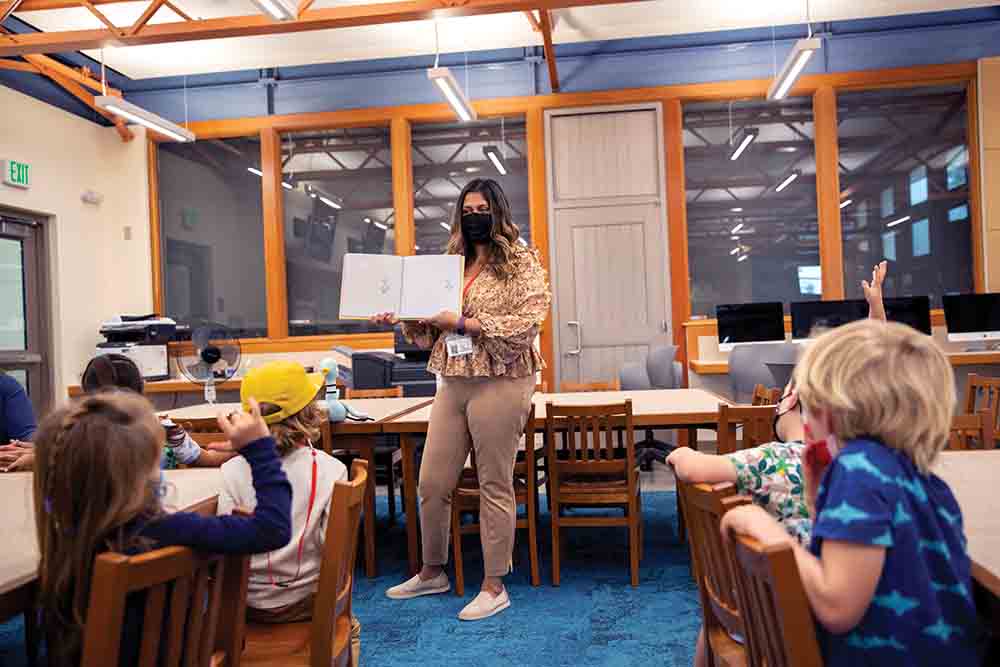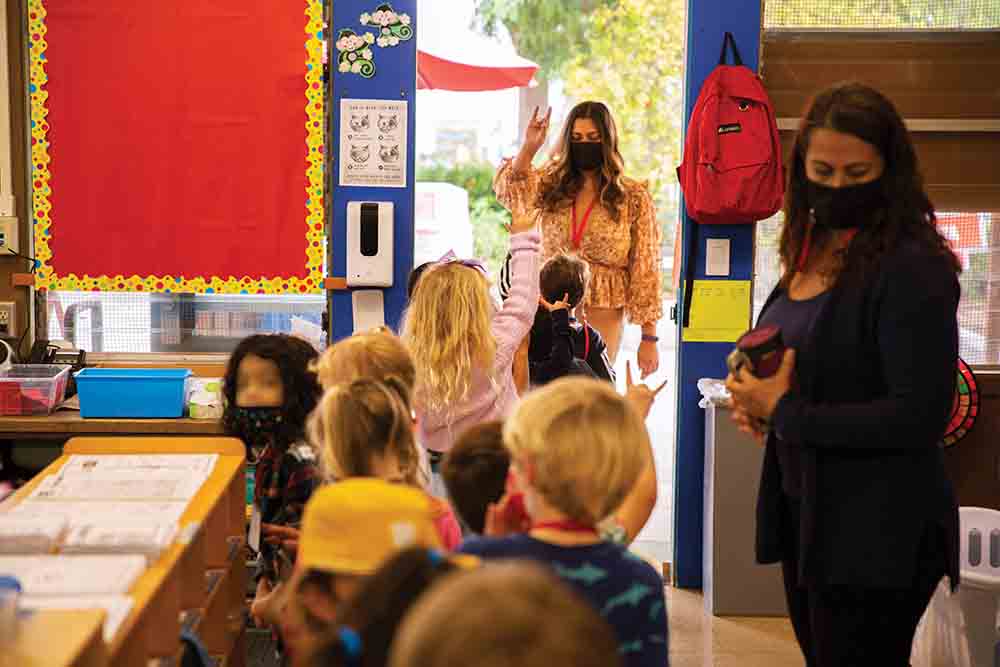Residency program provides stipends and tuition for student teachers

CSUCI alumna Julieta Silva Garcia reads to her class at Washington Elementary School in Santa Barbara.
By Kim Lamb Gregory
A new teacher residency program at CSUCI has enabled teaching credential student Julieta Silva to return to her elementary school alma mater.
“I’m teaching at Washington Elementary School in Santa Barbara where I went as a child,” said Silva, who expects to graduate in 2022. “It’s awesome to be part of this program and I live in Santa Barbara, so I don’t have to commute to Ventura County.”
Plus, she doesn’t have to pay tuition and she gets a $10,000-a-year stipend, thanks to the residency program, which was spearheaded by Dean and Professor of Education Brian Sevier, Ph.D.
“Most teachers will tell you they worked an additional job during their student teaching. I worked two additional jobs just to survive,” Sevier said. “If we’re going to truly live up to our mission to create pathways that get impediments out of students’ way, we have to change this practice.”
CSUCI’s School of Education has established residencies for student teachers at the Oxnard School District; Oxnard Union High School District (OUHSD); the Rio School District, and the Santa Barbara Unified School District (SBUSD).
There are currently 41 teaching residents. The 20 in the OUHSD are being funded by the district. The 19 in the Oxnard or Rio School district are being funded by a grant written in partnership with CSUCI and the Ventura County Office of Education.
The two residents in Santa Barbara are funded through the SBUSD and the James S. Bower Foundation, which seeks to enrich the social and cultural environment in Santa Barbara, with support for education high on the list.
Bower Foundation President Jon Clark said the foundation’s missions are closely aligned with CSUCI’s dedication to making sure first-generation, low-income students have a pathway to college.
SBUSD has seen tremendous success with a SBUSD initiative called Program for Effective Access to College or PEAC — a college readiness and access program for low-income, first-generation high school students — and sees the teacher residency program as the next step.
“If you’re a PEAC student from Santa Barbara and you want to go to CSUCI and come back to teach in your district, we want to show you there’s a pathway to get there,” Clark said.
The residency program also allows for more diversity in the teaching pool, Sevier said.
“Residencies allow us to reach a much more diverse pool of candidates because there are candidates who will not go through the student teaching experience because it is so cost-prohibitive,” Sevier said. “The districts want to create pathways for their alumni to return to teach in the schools they came from. And recruiting locally helps the teaching corps better reflect the demographics of the diverse student body.”

Garcia leads her classroom onto a new activity in Santa Barbara.
Credential candidate Christopher Guevara is student teaching at Rio Rosales Elementary School in his native Oxnard. He is currently working as a resource specialist for children with learning challenges and plans to go into special education after he graduates.
Guevara believes being from the area has a distinct advantage.
“It comes down to the majority of the population in Oxnard being Chicanx and being able to communicate not just their language, but to understand where they came from and how it is in their homes,” Guevara said. “Knowing the culture really helps me connect with the families and keep them in the loop.”
If the residents are offered a job after completing the residency program, they sign an agreement to work in the district for two to four years — which Sevier sees as a win for the student, and a win for the area educational system.
Return to the Table of Contents
© Fall 2021 / Volume 26 / Number 2 / Biannual
